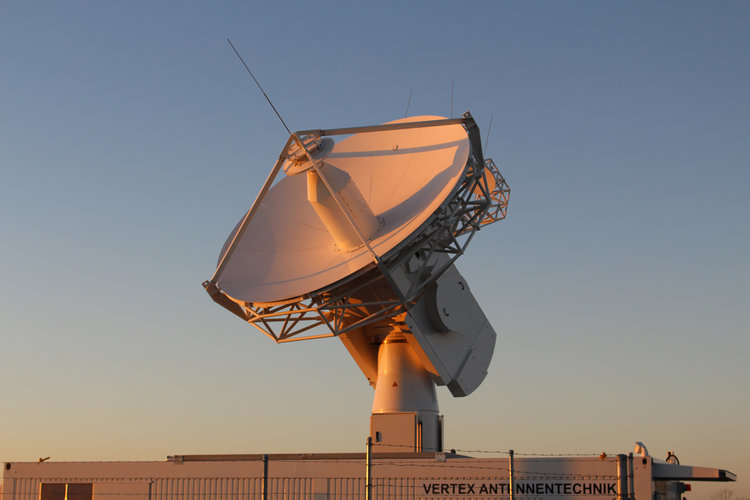Astra ready for commercial operations after first successful launch
Monday, 22 November 2021 14:28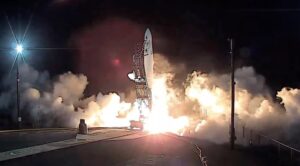
After reaching orbit for the first time, Astra Space executives said they are ready to begin commercial operations of their small launch vehicle and scale up production, while also preparing to test a new vehicle next year.
An absolutely bonkers plan to give Mars an artificial magnetosphere
Monday, 22 November 2021 12:01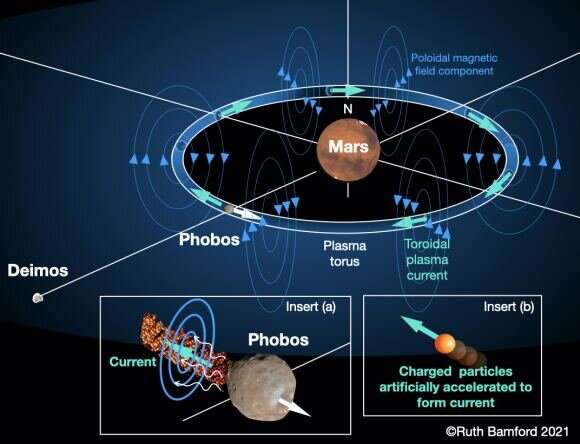
Terraforming Mars is one of the great dreams of humanity. Mars has a lot going for it. Its day is about the same length as Earth's, it has plenty of frozen water just under its surface, and it likely could be given a reasonably breathable atmosphere in time. But one of the things it lacks is a strong magnetic field. So if we want to make Mars a second Earth, we'll have to give it an artificial one.
The reason magnetic fields are so important is that they shield a planet from solar wind and ionizing particles. Earth's magnetic field prevents most high-energy charged particles from reaching the surface. Instead, they are deflected from Earth, keeping us safe. The magnetic field also prevents solar winds from stripping Earth's atmosphere over time. Early Mars had a thick, water-rich atmosphere, but it was gradually depleted without the protection of a strong magnetic field.
China launches new Gaofen-11 high resolution spy satellite to match U.S. capabilities
Monday, 22 November 2021 11:09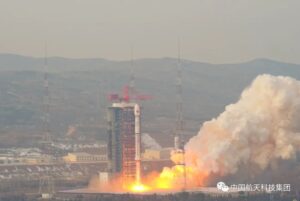
HELSINKI — China launched its third Gaofen-11 reconnaissance satellite Nov. 19, adding to a set of classified satellites with an optical resolution which may be comparable to top U.S.
ESA's Australian ground station to catch DART's first words
Monday, 22 November 2021 08:12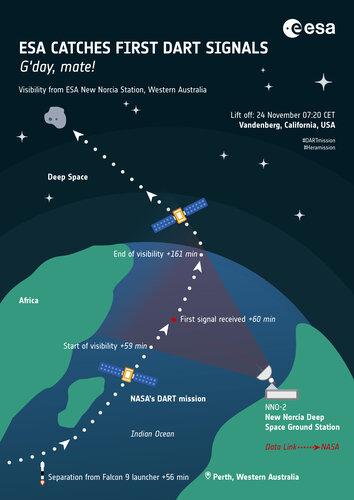 Image:
ESA's Australian ground station to catch DART's first words
Image:
ESA's Australian ground station to catch DART's first words ESA antenna to catch DART's first words
Monday, 22 November 2021 08:12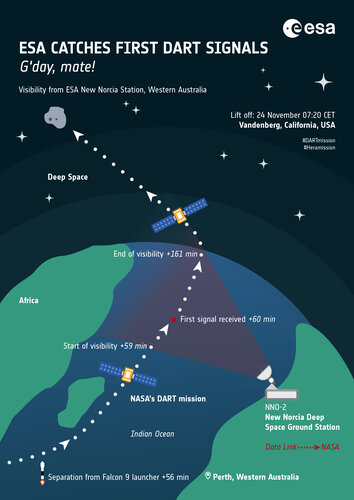 Image:
ESA's Australian ground station to catch DART's first words
Image:
ESA's Australian ground station to catch DART's first words Axiom Space outlines research plans for first ISS mission
Sunday, 21 November 2021 17:59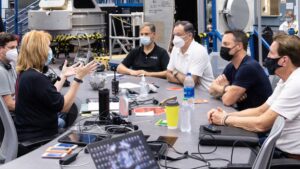
The three private astronauts on Axiom Space’s first mission to the International Space Station next February will perform more than 100 hours of research on their flight as the company works to advance plans for its own space station.
Space Force general: U.S. has a lot of catching up to do on hypersonic missile technology
Sunday, 21 November 2021 11:18
“We're not as advanced as the Chinese or the Russians in terms of hypersonic programs,” Gen. David Thompson said Nov. 20. at the Halifax International Security Forum.
Planetary defenders: after NASA's DART comes ESA's Hera
Sunday, 21 November 2021 06:52 The world will be watching the milestone launch of NASA's Double Asteroid Redirection Test, DART, spacecraft on Wednesday, 24 November, intended to alter one small part of the Solar System forever.
DART will collide with the small moon of an asteroid in order to shift its orbit around its parent body - to test the concept of diverting threatening objects away from Earth.
ESA will pro
The world will be watching the milestone launch of NASA's Double Asteroid Redirection Test, DART, spacecraft on Wednesday, 24 November, intended to alter one small part of the Solar System forever.
DART will collide with the small moon of an asteroid in order to shift its orbit around its parent body - to test the concept of diverting threatening objects away from Earth.
ESA will pro Bolt research effort cultivates collaboration, hypersonic workforce
Sunday, 21 November 2021 06:52 A team of scientists at Johns Hopkins Applied Physics Laboratory, supported by the Air Force Research Laboratory's Air Force Office of Scientific Research (AFRL/AFOSR), currently leads a collaborative research and experimentation effort that could aid development of hypersonic systems.
"[Hypersonics] capability is so important [to] DOD's need to deter and defeat the U.S.'s great-power comp
A team of scientists at Johns Hopkins Applied Physics Laboratory, supported by the Air Force Research Laboratory's Air Force Office of Scientific Research (AFRL/AFOSR), currently leads a collaborative research and experimentation effort that could aid development of hypersonic systems.
"[Hypersonics] capability is so important [to] DOD's need to deter and defeat the U.S.'s great-power comp Pentagon 2IC reveals what US knows about China's Hypersonic Glide Vehicle
Sunday, 21 November 2021 06:52 Last month, the Financial Times reported that China carried out two hypersonic weapons tests of a new "fractional orbital bombardment" system this past summer involving a hypersonic glide vehicle which America "does not currently possess." Beijing maintains the testing involved a "routine" trial of reusable space rocket technology.
Pentagon second-in-command Gen. John Hyten, vice chairman
Last month, the Financial Times reported that China carried out two hypersonic weapons tests of a new "fractional orbital bombardment" system this past summer involving a hypersonic glide vehicle which America "does not currently possess." Beijing maintains the testing involved a "routine" trial of reusable space rocket technology.
Pentagon second-in-command Gen. John Hyten, vice chairman US still characterizing damage of satellite struck in Russian missile test
Sunday, 21 November 2021 06:52 The United States is still characterising the damage from an anti-satellite missile test allegedly conducted by Russia earlier this week, US Space Command Deputy Commander John Shaw said on Wednesday.
"We are still characterising this event. We expect the debris will grow over time," Shaw said.
The Deputy Commander explained that the debris will become a threat that will eventually h
The United States is still characterising the damage from an anti-satellite missile test allegedly conducted by Russia earlier this week, US Space Command Deputy Commander John Shaw said on Wednesday.
"We are still characterising this event. We expect the debris will grow over time," Shaw said.
The Deputy Commander explained that the debris will become a threat that will eventually h Optus Selects Launch Partner for Next Gen Satellite
Sunday, 21 November 2021 06:52 Optus, Australia's largest and most experienced satellite owner and operator, has selected Arianespace to provide launch services for Optus 11, the replacement for its D1 Satellite.
The replacement of D1 is planned for 2023 and will see Optus' next generation satellite, Optus 11, launch into orbit. This next generation satellite, the Asia-Pacific region's first software-defined high throug
Optus, Australia's largest and most experienced satellite owner and operator, has selected Arianespace to provide launch services for Optus 11, the replacement for its D1 Satellite.
The replacement of D1 is planned for 2023 and will see Optus' next generation satellite, Optus 11, launch into orbit. This next generation satellite, the Asia-Pacific region's first software-defined high throug CGI selected for GSA's ASTRO space and development IDIQ contract
Sunday, 21 November 2021 06:52 CGI has been selected by the General Services Administration (GSA) for the multi-award ASTRO Indefinite-Delivery/Indefinite-Quantity (IDIQ) contract. This 10-year award provides CGI the opportunity to compete for task orders with an unlimited ceiling value to research, develop, support, maintain and operate manned, unmanned and optionally manne platforms and robotics, such as satellites, launch
CGI has been selected by the General Services Administration (GSA) for the multi-award ASTRO Indefinite-Delivery/Indefinite-Quantity (IDIQ) contract. This 10-year award provides CGI the opportunity to compete for task orders with an unlimited ceiling value to research, develop, support, maintain and operate manned, unmanned and optionally manne platforms and robotics, such as satellites, launch Horiba Mira and GMV NSL collaborate on ESA project to improve road traffic efficiency
Sunday, 21 November 2021 06:52 Europe's leading automotive engineering consultancy, HORIBA MIRA confirmed that its collaboration with GMV NSL to develop new and improved passenger car platooning solutions on behalf of the European Space Agency (ESA) will move into a live trials phase in Q1 2022, encompassing both simulated and physical testing during 2022.
The ground-breaking project aims to advance platooning - the pro
Europe's leading automotive engineering consultancy, HORIBA MIRA confirmed that its collaboration with GMV NSL to develop new and improved passenger car platooning solutions on behalf of the European Space Agency (ESA) will move into a live trials phase in Q1 2022, encompassing both simulated and physical testing during 2022.
The ground-breaking project aims to advance platooning - the pro 

